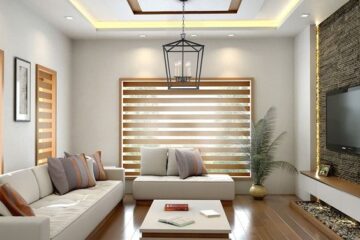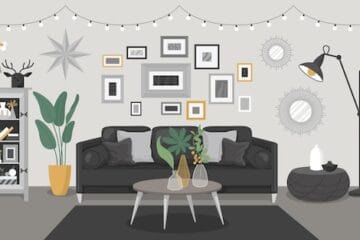
Living with anxiety can be a struggle, as at times, the smallest things and thoughts can send you in a downward spiral. Of course, today more than ever, mental health needs to be talked about more openly. While seeing a counsellor is imperative for anyone suffering from anxiety, there are small, little changes that can help to an extent. One way is to make your home a more comfortable and relaxing oasis, that helps soothe your nerves. We spoke to two experts on how a home can be converted into a space where people feel safe, calm and at ease.
What is Anxiety?
In order to use these tips better, it is important to understand this condition. According to Kedar Tilwe, psychiatrist at SL Raheja Hospital, “Anxiety is a distressing feeling of nervousness, worry and apprehension for an anticipated or perceived situation, and is usually disproportionate to the actual threat posed by the event. Physical symptoms experienced during an anxiety attack include palpitations, sweating, tingling sensation in extremities, fatigue, muscle tension and lethargy.”
Since the person suffering from anxiety has repeated worrying thoughts, they usually suffer from insomnia or broken sleep cycles.
Home Decor Tips To Reduce Anxiety
CLEAR THE CLUTTER
A clean, minimalistic décor can be soothing to your senses. “Too much of clutter can cause more distraction and may worsen the symptoms of anxiety,” says Tilwe. If your home doesn’t have too much clutter then there are other ways to make your interiors more congenial.

Annkur Khosla, principal architect and interior designer, Annkur Khosla Design Studio, suggests picking a few, large décor pieces that become the focal point of the room they are in. Think big sculptures or paintings that are ‘larger than life’ and evoke a positive vibe. These should stir up thoughts that make you believe ‘life is beautiful’, and put anxiousness to rest. You can opt for abstract art, metallic sculptures, or even something in vivid colours that takes you to your ‘happy place’. This is an ideal distraction tool for those interested in design.
OPT FOR NEUTRAL TONES
Whether it is the colour of your walls or your bedspread, neutral tones are more calming than dark shades, opines Tilwe. Think hues of blush pink, light grey, mint green, powder blue for your home. “Opt for oak-stained veneers, earthy, wooden flooring, and furnishing in muted tones. Pay more attention to the texture and feel and pick things made in natural materials. Velvet and suede upholstery can add a touch of elegance as well as have a soft feel,” says Khosla.

HAVE AMPLE NATURAL LIGHT
“Having large, open spaces which allow good ventilation and let natural light in help reduce anxiety symptoms, along with decreasing the sense of suffocation during a panic episode,” adds Tilwe. If you live in a compact apartment, you can choose an open plan layout that has less barrier walls and make the space look bigger. “Or add mirrors at strategic spots for a similar effect,” says Khosla. Large window panes can lessen the feeling of claustrophobia.

When it comes to lighting fixtures, both experts recommend choosing warm and mellow lights for their calming effects. Don’t let the light fall directly into your eyes and pick an anti-glare filter for your ceiling light fixture.
PLANTS TO THE RESCUE
Introduce greenery and fresh air into your space by adding indoor plants in nooks and corners. Not only do they purify air and increase oxygen levels, looking at them can be calming and therapeutic. “Nurturing houseplants or maintaining a small kitchen garden can become a hobby that can be stress-buster,” says Tilwe.

To up your home’s design quotient, Khosla recommends adding 1-2 plants in large ceramic urns and placing them strategically in the room or passageway. Or, create a vertical garden by hanging them in interesting pots from the ceiling or walls.
ADD SOOTHING ELEMENTS
One way to curb anxiety is by placing things that can soothe different senses. For instance, the sound from a wind-chime can help trigger calming thoughts. You can even create a playlist of songs that put you in a good mood and listen to it when you get too anxious.
Scents from essential oils help reduce stress. A bottle of water next to your bed is a good idea as many experience dryness in the mouth during anxiety attacks, and this can help you recover sooner. Dr Tilwe also suggests using organisers to keep your desk clutter-free and your mind more relaxed.

While these tips can definitely come in handy in controlling your anxiety, they are in no way a replacement for your medication or treatment for the condition. To sum up, Khosla says, “Use these tips to feel more empowered through design.”
[“source=architecturaldigest”]


